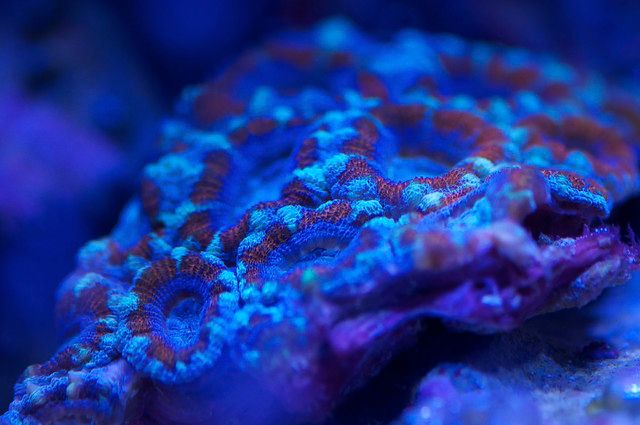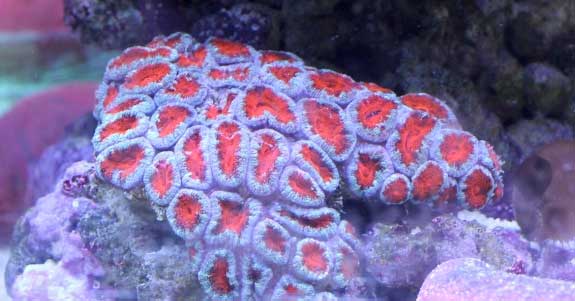[ad_1]
Acanthastrea corals, commonly known as the Acan Coral or Acan Lords, are Large Polyp Stony corals, and one of the most beautifully colored soft coral species. They come in various shades of purple, red, green, blue, orange, brown, rust, or pale tan to pale grey. The family includes many species, which have a lot of different names and are touted by many as one of the easiest LPS corals to grow.
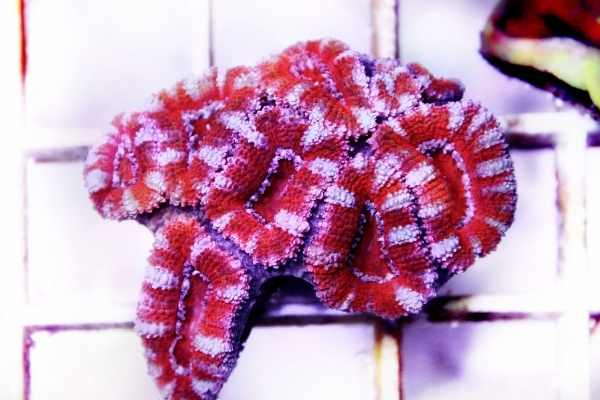
Red acan coral shown here
Quick facts
Common names: Acans, Acan lords, Micros, Micro lords, Micromussa
Scientific name: There are several species all considered (or once) considered to be Acans: Acanthastrea echinata, Acanthastrea lordhowensis, (now Micromussa lordhowensis). For the purpose of this article, we will use the common name for both
Care difficulty level: Moderate
Aggression level: Semi-aggressive. Definitely don’t want other corals to touch, including sometimes other Acans. Otherwise some report quite peaceful.
Expense: Typical LPS price for the most common color varieties.Very expensive for some of the popular varieties like Lordhowensis (actually classified as a micromussa)
Acan corals in the ocean
Many acan coral species (Acanthastrea sp.) are found in the South Pacific Ocean (Philippines, Hong Kong, etc.) in waters between 0 – 30m deep, which ironically seems like the same depth many waterproof watches are good. So if you are underwater and still know what time it is…you might see an Acan coral. In the ocean, the Acan coral feeds mostly at night—however they will acclimate to your schedule in the aquarium and eat when you feed them.
Acan coral care in the aquarium
Luckily, almost every home aquarium in the world is between 0-30 meters deep which should make it easy for you to give your Acan coral the care it needs. The Acan coral is generally hardy and easy to care for, making it a suitable species for intermediate aquarists. The amazing color varieties will make it a show stopper even for advanced hobbyists with mature tanks.
Acan coral placement
One of the most popular questions I get is–what is the ideal placement for my new acan coral? The first thing is to be sure to give your new friend plenty of room to grow. Many of us (raising my hand here with a look of guilt on my face) pack our coral frags in too closely. We optimize the look of our tanks for the present and don’t always take future growth into mind. Since this coral has some nasty sweeper tentacles, be sure to give it plenty of space between colonies, so you don’t start a turf war.
You also would ideally situate this coral in a place with moderate water flow and lighting. Not too much, not too little. Just right. Remember, it is a large polyp stony coral after all and you don’t want the water flow to be so high (like with SPS) that it would rip the flesh.
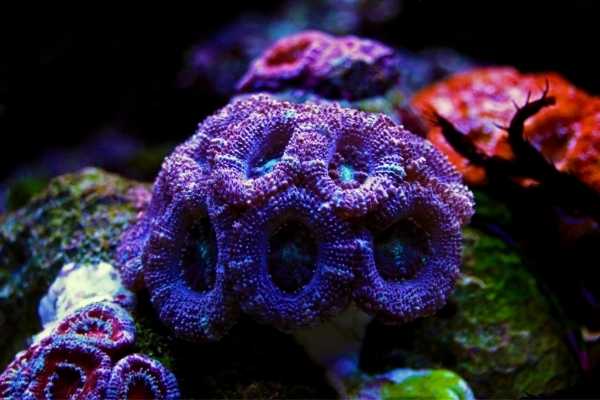
Ideal acan coral placement is an area of moderate flow and moderate lighting, with sufficient space between your colony and neighboring colonies of other coral species
They are photosynthetic, too, and appreciate moderately high PAR lighting but will tolerate lighting on the lower end of moderate, as well.
Signs of trouble
An acan coral dying or one that is not happy in the tank because of too much water flow or too much light will not extend its polyps. If your water parameters are good (and have been stable) and if your Acan coral won’t extend its polyps—even at night or even when feeding—then it could be that the lights or water flow are too strong for your specimen. Carefully move it to an area of lower flow or less intense light (or both…depending on the circumstances).
Acan coral feeding
Acan corals are considered to be photosynthetic, meaning they derive at least part of their calories from the commensal zooxanthellae that live in their tissue.
Acanthastrea species will also pull some nutrients from the water column, which will help keep nutrient levels in check if you have fish in your tank as well.
But please keep in mind that while corals like Acans may seem a bit light plants (absorbing nutrients from the water and converting light into energy), it is the zooxanthellae that are truly plant-like. Acans are corals and all corals are animals…and what do animals like to do? Animals eat. So you should feed your Acans.
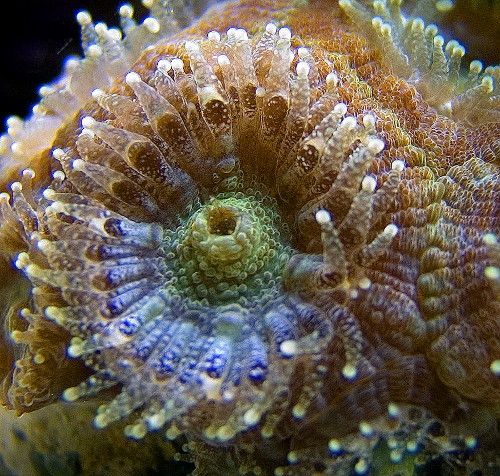
Note the extended feeding polyps in this image
When it is feeding time, the Acan coral will extend its polyps to capture prey—copepods, artemia, chopped seafood or even commercial foods—frozen, flake or pellet. As long as it can catch it and pull it in, the food can be eaten.
Target feed these corals by using Julian’s thing to squirt a tiny, gentle blast of food over the polyps.
Julian’s thing is a device designed to help you target feed corals and help you provide the right Acan coral care
If there is any doubt about the importance of feeding these corals, give it a try, and watch how quickly they grow.
Compatibility with Acan lord corals
Acan lord corals are generally compatible with most other species—the key ingredient to compatibility is space…if you pack it in too close to other corals, or if you allow a Green Star Polyp colony to grow right up to them, you’re in for coral warfare. Given enough space to thrive and grow, the Acan coral will make an attractive addition to your saltwater aquarium.
If you plan to keep Acanthastrea species with soft leather corals, you will want to take some measures to neutralize the chemical warfare leather corals wage in a tank by using activated carbon and keeping up with water changes.
You also wouldn’t want to keep Acans with fish that like to peck at the large fleshy polyps of LPS corals…unless you meant the Acan to be fish food…which is certainly an expensive and not recommended way to go.
Fragging
Fragging this LPS species is possible and relatively straightforward as long as you have the right power tools to execute a fast, safe cut. It certainly isn’t a coral I’d recommend as your first fragging experiment, but if you have the right gear and an iron constitution it can be done.
Watch this video to learn more about fragging acans corals
If you’re interested in diving deeper into learning how to frag corals (it’s usually easier than you think), download my definitive guide.
Where can you find acan coral for sale?
Acanthastrea species are popular and are available at above-average local fish stores and are certainly available from online stores, like LiveAquaria and others.
Types
Due to their popularity and the mind-numbing array of color choices, you will find different types or varieties available under different names, like Australian Lord (or Aussie Lord), rainbow, green, superman, etc.,
If you’re looking for a specific type or coloration to fit your tank, I recommend you shop around online and pick the perfect type.
For more information
If you enjoyed reading about the acan coral, you should read about these other popular LPS coral species:
Learn all about acans here:
[ad_2]
Source link

